42+ SAMPLE Partner Agreement
-
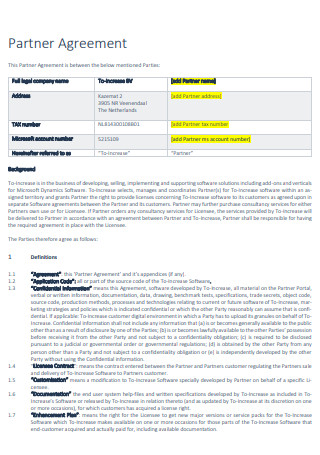
Partner Agreement
download now -
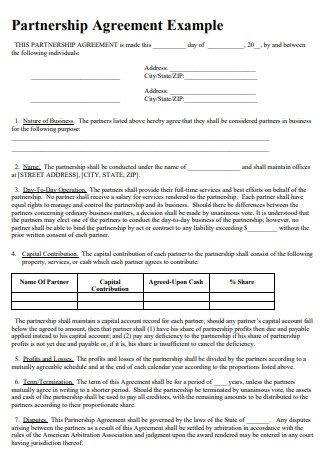
Partnership Agreement
download now -
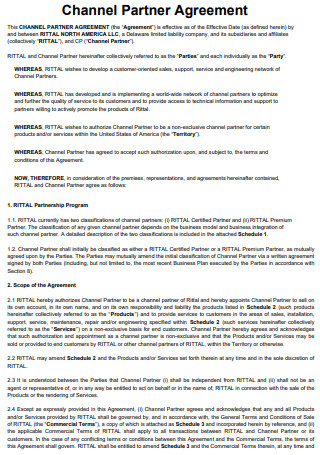
Channel Partner Agreement
download now -

Implementation Partners Agreement
download now -

Industrial Partners Agreement
download now -
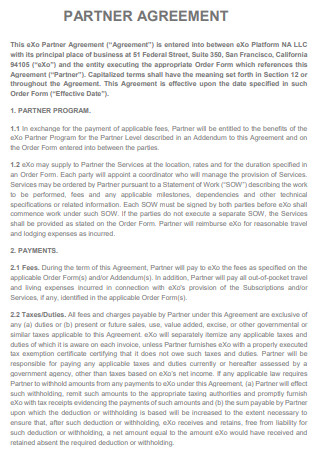
Sample Partner Agreement
download now -

Master Partner Agreement
download now -
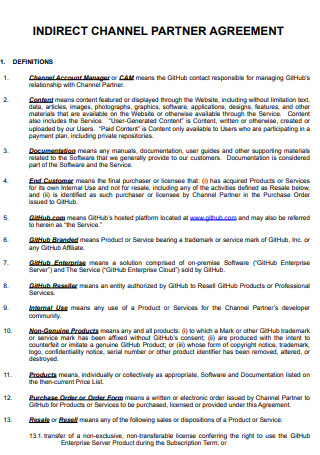
Indirect Channel Partner Agreement
download now -
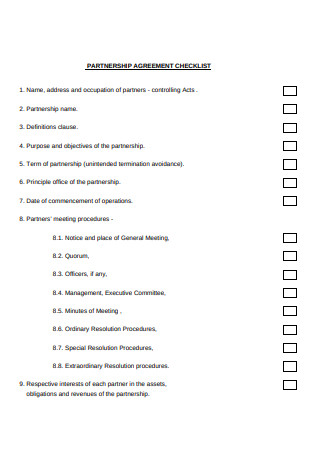
Partnership Agreement Checklist
download now -
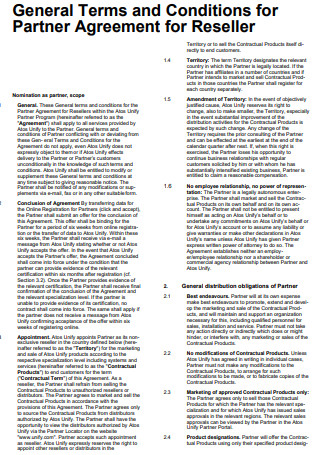
Partner Agreement for Reseller
download now -

Partner Portal Agreement
download now -
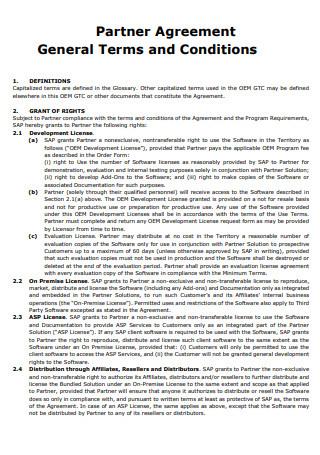
Partner Agreement General Terms and Conditions
download now -
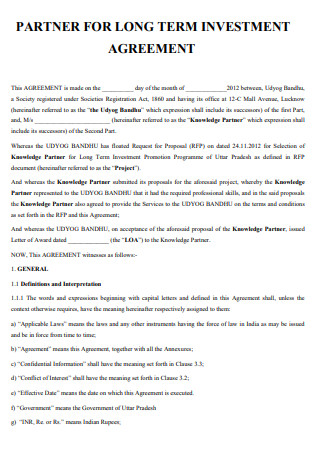
Partner for Long Term Investment Agreement
download now -
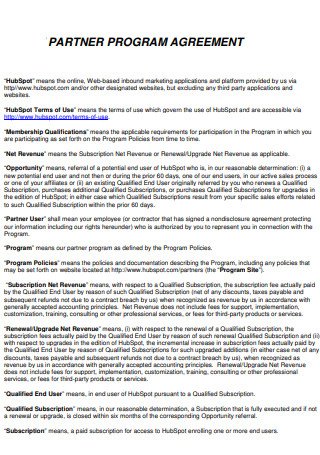
Partner Program Agreement
download now -
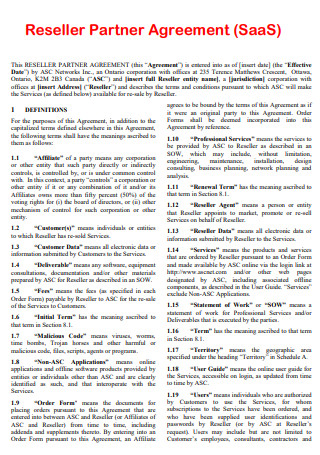
Reseller Partner Agreement
download now -
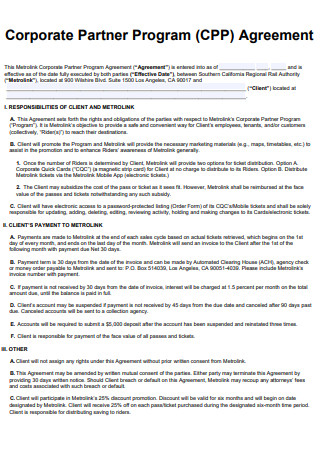
Corporate Partner Program Agreement
download now -
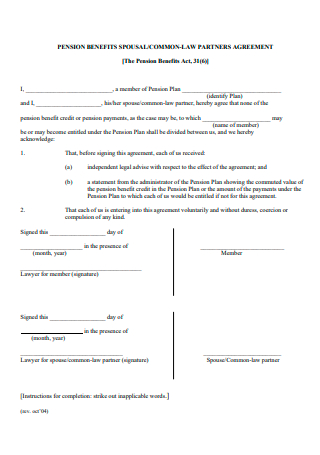
Common Law Partner Agreement
download now -
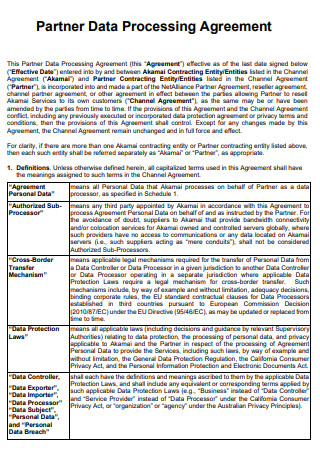
Partner Data Processing Agreement
download now -

Trading Partner Agreement
download now -
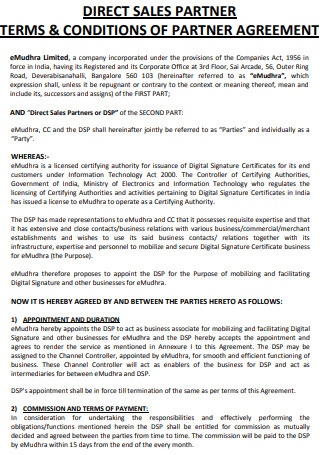
Direct Sales Partner Agreement
download now -
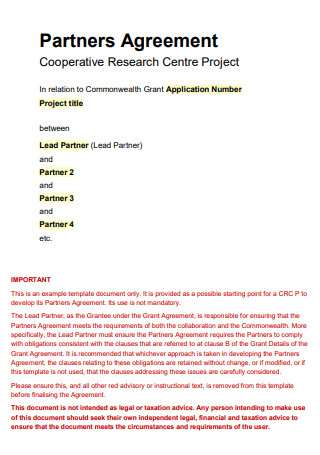
Cooperative Research Partner Agreement
download now -
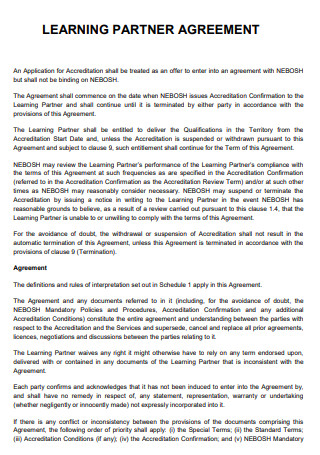
Learning Partner Agreement
download now -
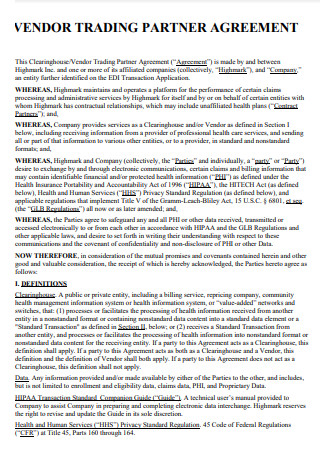
Vendor Trading Partner Agreement
download now -
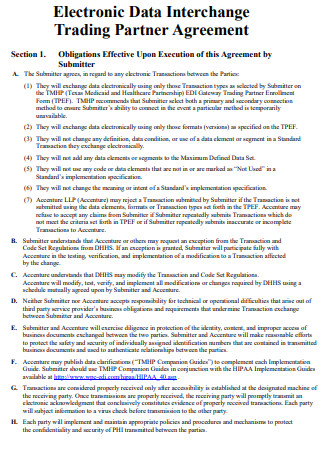
Electronic Data Interchange Trading Partner Agreement
download now -
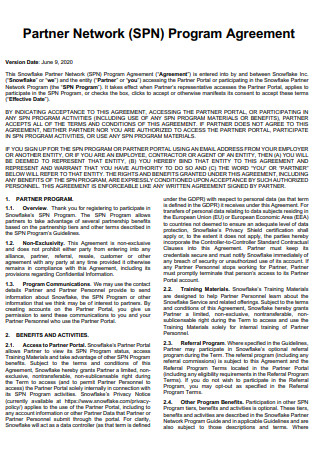
Partner Network Program Agreement
download now -

Simple Partner Agreement
download now -
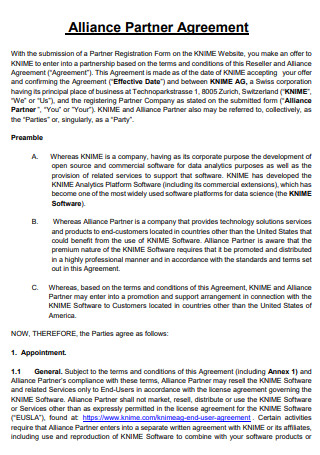
Alliance Partner Agreement
download now -
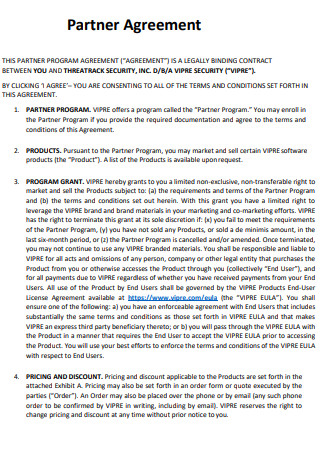
Basic Partner Agreement
download now -
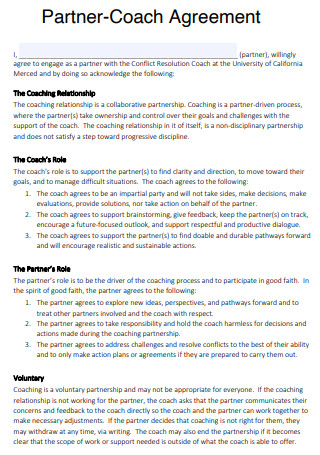
Partner Coach Agreement
download now -
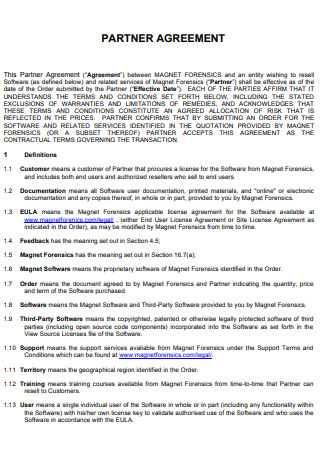
General Partner Agreement
download now -

Trading Partner Information Sharing Agreement
download now -
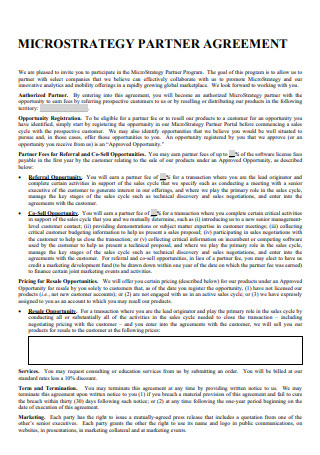
Microstrategy Partner Agreement
download now -

Community Partner Agreement
download now -

Business Planning and Partner Agreement
download now -
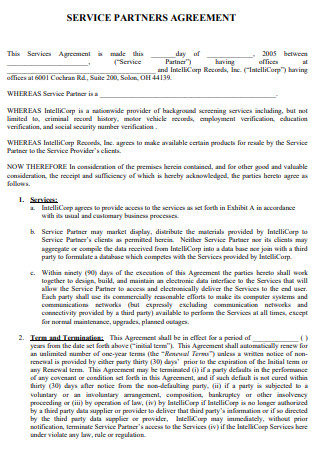
Service Partner Agreement
download now -
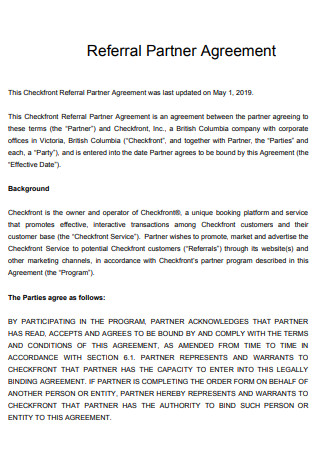
Referral Partner Agreement
download now -
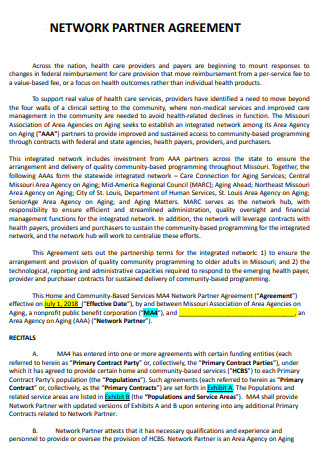
Network Partner Agreement
download now -
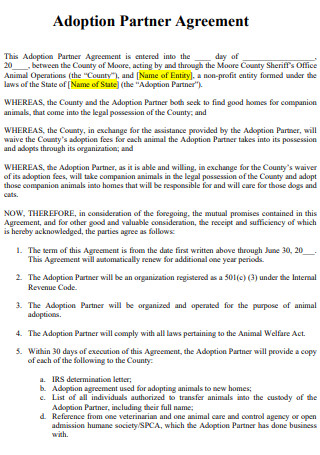
Adoption Partner Agreement
download now -
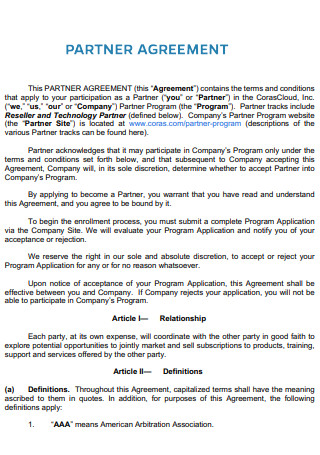
Standard Partner Agreement
download now -
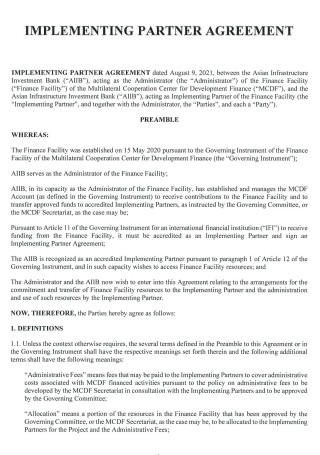
Implementing Partner Agreement
download now -

Educational Partner Agreement
download now -
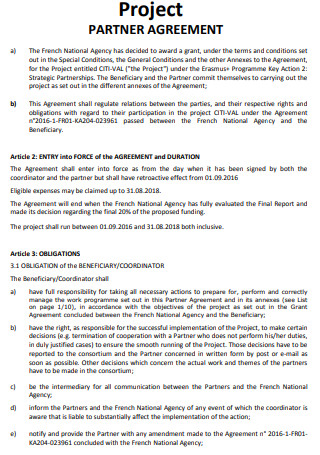
Project Partner Agreement
download now -

Partner Agreement General Conditions
download now
FREE Partner Agreement s to Download
42+ SAMPLE Partner Agreement
What Is a Partner Agreement?
What Should be Covered In a Partner Agreement?
What Are the Benefits of a Partner Agreement?
What Are the Potential Consequences
What Are the Elements Included In a Partner Agreement?
How do You Write a Partner Agreement?
FAQs
Can You Fire a Business Partner?
Do Partner Agreements Need to be in Writing?
How Are Taxes Paid by Partnerships?
What Is a Partner Agreement?
A partner agreement is an internal business contract that outlines particular business practices for the partners of a company. This kind of document helps establish rules for how the partners will handle business responsibilities, ownership and investments, profits and losses, and company management. While the word “partners” often refers to two people, in this context there is no limit as to how many partners can form a business partnership.
Partners agreements go by various names depending on the state and industry in which they are formed. You might know partners agreements as:
Business Partnership Agreement
Articles of Partnership
Formation of Partnership Agreement
Creation of Partnership Agreement
General Partnership Agreement
Partnership Contract
Partner agreements help answer a lot of basic questions before they come up in practice to make sure the company runs smoothly.
Partner agreements help establish clear boundaries and expectations regardless of whether your partnership is general, limited, or limited liability.
What Should be Covered In a Partner Agreement?
A partner agreement can be edited or modified to reflect the needs of the partnership being made. However, there are some important parts that are common in most partner agreements like the following:
Percentage of Ownership
The agreement can be used to reflect the commitment of each partner to the business. Some partners might prefer to cover startup costs or contributions of equipment, and services or property and these can be pledged within the partnership agreement. These contributions often dictate the percentage of ownership each partner has in the business.
Division of Profit and Loss
The agreement is also used to define the share of profits and losses between each partner, either based on ownership or equally. This can help avoid conflicts in the future.
Length of the Partnership
The partnership agreement should also include the information about the length of the partnership. If partnerships are being formed for an unspecified amount of time it can be stated in this section. Sometimes, partnerships can dissolve after meeting certain milestones and the partnership agreement can reflect the same.
Decision Making and Resolving Disputes
Conflicts in partnerships often arise because of unclear decision-making powers and dispute resolution mechanisms. This can be prevented by clearly detailing the decision-making process and dispute resolution process within the partnership agreement.
Authority
Partner authority or binding power should be defined within the agreement. This should detail the terms and circumstances under which the partners can bind the company and outline the process of doing so.
Withdrawal or Death
The partnership agreement should also outline the procedure for handling the departure or death of a partner. This could include the buy and sell agreement with the valuation process or redistribution of company assets and changes in ownership.
What Are the Benefits of a Partner Agreement?
Partner agreements offer a host of benefits to those business owners who create one. A few of the most substantial benefits include:
Clear Responsibilities
The partnership agreement clearly establishes personal responsibilities for each partner in terms of capital, profits, losses, and liabilities in addition to business management and oversight.
Business Outline
The agreement delineates all the elements of the business and how the partners are to manage each, which helps reduce confusion once the business is running.
Form of Mediation
The primary benefit of a partnership agreement is in its ability to forestall future arguments. Since all expectations and responsibilities are outlined, all partners should know what they need to do to fulfill their duties.
What Are the Potential Consequences of a Partner Agreement?
When you start your company, the division of labor and resources between partners might seem obvious, so you might not think it is essential to create a partnership agreement. Unfortunately, your business might suffer negative consequences in the future without one.
State Law
Every state has different laws governing partnerships. If you do not create an agreement, state law will automatically govern the future of your company in the case of a partner’s death or another change to the partnership, regardless of your wishes or intent.
Disputes
Disputes regarding the operation of the company could arise in the future. With no documentation outlining the goals, responsibilities, and expectations of the partners, the company could suffer.
Tax Implications
For those limited or limited liability partnerships, without a clear description of each partner’s contributions, the state could assume each partner owns the same share of the company and tax them accordingly.
What Are the Elements Included In a Partner Agreement?
Most partner agreements share some common elements. When drafting yours, make sure you include the name of your business; purpose—explain what your business does; partners’ information—provide all partner’s names and contact information; capital contributions—describe the capital (money, assets, tangible items, property, etc.) that each partner provided; ownership interest—offer the specific percentage of the company that each partner owns; profit and loss distribution—explain the percentage of profit and loss assigned to each partner and how the company will distribute revenue; management and voting—outline how the partners will manage the company by delineating individual responsibilities in addition to explaining decision-making and voting between partners; adding or removing partners—create specific guidelines for adding new partners, removing partners who want to leave, and removing partners who do not want to leave; dissolution—describe how you will liquidate the business and share out any profits should the company dissolve; partnership tax elections—assign a partnership representative to manage all tax communications and; death or disability—provide clear instructions for how each partner’s ownership in the company should be liquidated or redistributed in the unlikely event of their death or disability.
What Are the Types of Partnerships?
There are a few types of partnership. Here are the following:
How do You Write a Partner Agreement?
These are the steps you can follow in order to write a partner agreement:
Step 1: Title
Give your partnership agreement a title. Make sure it reflects the type of partnership being formed. These can be limited partnerships, limited liability partnerships, general partnerships, or limited liability limited partnerships .
Step 2: Purpose
Outline the goals of the partnership agreement.
Step 3: Term
Mention the duration of the partnership
Step 4: Contribution
Define the contribution amounts of each partner (cash, property, services, etc.).
Step 5: Assets
Define the ownership interests of each partner (assets such as stocks or shares).
Step 6: Roles and Responsibilities
Outline management roles and terms of authority of each partner.
Step 7: Accounting
Add accounting obligations of each partner, if applicable.
Step 8: Detailed Data
Provide details on the distribution of profits and losses between the partners.
Step 9: Basic Rules and Benefits
Detail the salaries, work hours, sick leave, and vacation policy for each partner.
Step 10: Set Restrictions
Add permissions and restrictions on any outside business activity for any partner, if applicable.
Step 11: Fair Share of Information
Include information about the partners’ buyout options, if any.
Step 12: Assessment or Evaluation
Include the process for adding new partners or removing original partners.
Step 13: Legalities
Add clauses and provisions. Clauses and provisions set separate rules for certain special circumstances. One such example is a dispute resolution clause. The dispute resolution clause is used to define the partner with the decision-making power in case of a dispute and to outline the dispute-resolution process.
Step 14: Terms and Conditions
Add terms and conditions under which the partnership can be terminated.
FAQs
Can You Fire a Business Partner?
A partnership can be terminated as easily as one partner telling another, “It is over!” In corporations, however, you may need to resort ot legal action in order to kick a partner out. The relationships between partners is covered by business laws, automatically.
Do Partner Agreements Need to be in Writing?
Partnerships are unique business relationships that do not require a written agreement. Hence, it is always a good idea to have such a document. Because partners share profits equally in the absence of a written agreement, you could run into situations where you feel that you are doing all of the work, but your partner is still getting half of the profits. It is always smart and fair to cover major issues related to your business in writing.
How Are Taxes Paid by Partnerships?
As a partner, you have income through your share of the profits (or a loss if the partnership is losing money), and you report this income on your personal taxes. Taxes are paid through the personal income tax filings of individual partners. The partnership itself reports profits and losses to the IRS on a special form (so that the IRS knows how much you receive), and you pay the taxes on your portion.
Partners have a duty of loyalty to the other partners and must not enrich themselves at the expense of the partnership. The only requirement is that in the absence of a written agreement, partners do not draw a salary and share profits and losses equally. Partners also have a duty to provide financial accounting to the other partners.
In the absence of a written agreement, partnerships end when one partner gives notice of his express will to leave the partnership. If one does not want the partnership to end so easily, you can have a written agreement that outlines the process through which the partnership will dissolve. For instance, the partnership can discontinue if a certain event happens or it can provide a mechanism whereby the partnership can continue if the remaining partners agree to do so.
